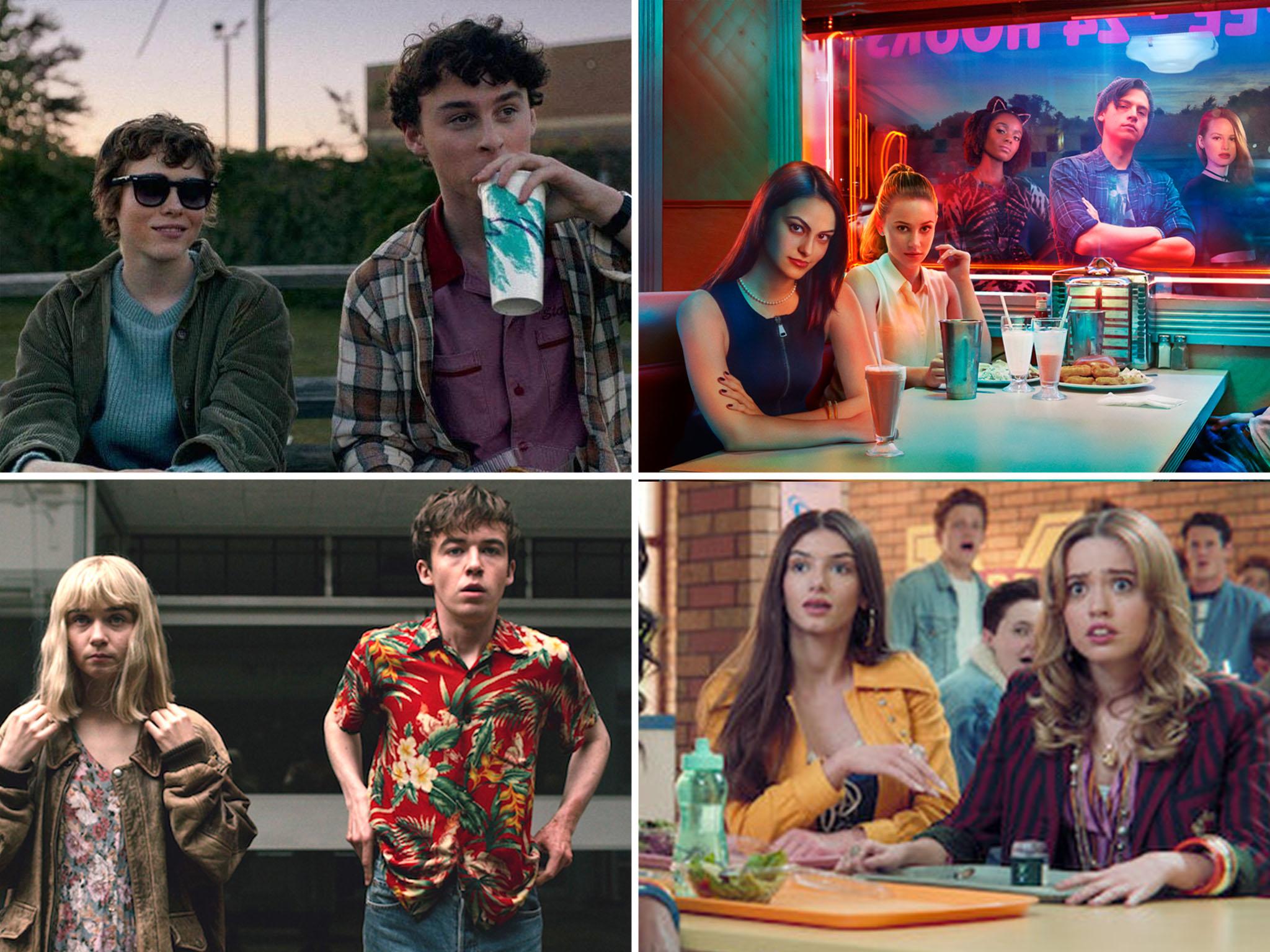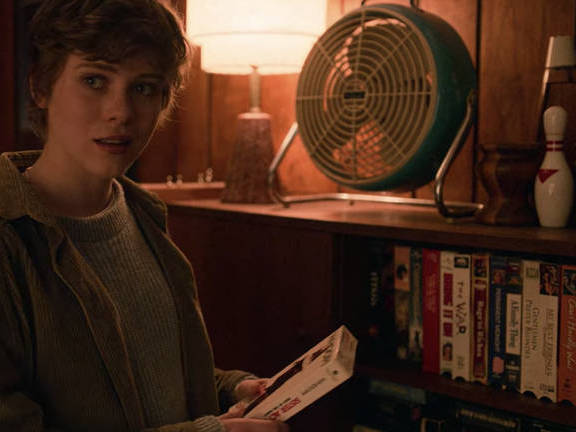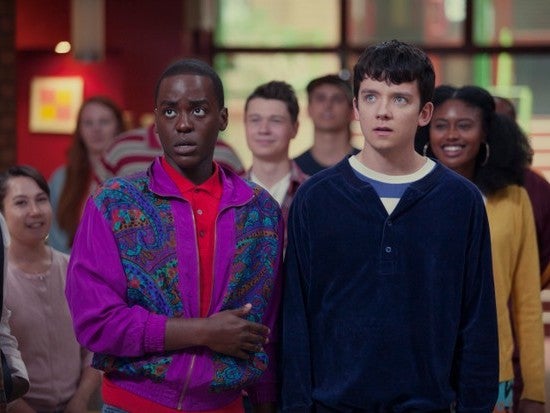The Independent's journalism is supported by our readers. When you purchase through links on our site, we may earn commission.
Killing time: the new teen TV shows that won’t be defined by decade
Hit shows like ‘I Am Not Okay with This’ and ‘Sex Education’ are blending eras to create period-unspecific television that goes beyond nostalgia. It’s just the shot of escapism we need, says Annie Lord


Your support helps us to tell the story
From reproductive rights to climate change to Big Tech, The Independent is on the ground when the story is developing. Whether it's investigating the financials of Elon Musk's pro-Trump PAC or producing our latest documentary, 'The A Word', which shines a light on the American women fighting for reproductive rights, we know how important it is to parse out the facts from the messaging.
At such a critical moment in US history, we need reporters on the ground. Your donation allows us to keep sending journalists to speak to both sides of the story.
The Independent is trusted by Americans across the entire political spectrum. And unlike many other quality news outlets, we choose not to lock Americans out of our reporting and analysis with paywalls. We believe quality journalism should be available to everyone, paid for by those who can afford it.
Your support makes all the difference.It’s difficult to tell in which period I Am Not Okay with This exists. The Netflix comedy, about a teenage girl struggling with grief and queerness, is set in a small Pennsylvania town with dusty signs for “Fiddles Diner” and “Booky’s Hardware”, yet to undergo the accelerated globalisation of the Nineties that stuck a Starbucks on every American street corner. The fashions also throw you off guard. Superpowered protagonist Syd’s chunky knits, striped T-shirts and Levi’s jeans are typical of a 1970s student. Her so-uncool-he’s-cool friend Stan’s pale blue shoulder-padded suit wouldn’t have appeared until way into the Eighties. Nor would his Enya T-shirt. And the videotapes in Syd’s living room include millennium classics like Bring It On and Erin Brockovich.
The era mish-mashing continues when Stan asks Syd to come over and listen to a “cult” band called Bloodwitch, whose intoxicated groaning recalls louche Seventies bands like The Velvet Underground. Is it set further in the future than we thought? When Syd’s mum gets annoyed at her for shrinking her skin-coloured tights in the wash, Syd yells back: “No one’s worn those since the Nineties.” And after a school counsellor asks Syd to record her feelings in a diary, Syd asks why she can’t just write on her phone.
Genre has long been dead in popular culture. In music, hip-hop sounds more like emo nowadays, while the language barrier has become increasingly irrelevant as mainstream artists cherry-pick from Latin pop and have a go at singing in Spanish. Western movies have all the jump scares and prolonged torture scenes of horror films. The internet allows us all to pick’n’mix inspiration from far-flung places that would otherwise remain buried beneath subculture initiation ceremonies. But now our concept of time is disintegrating, too – and none more so than on the small screen.
We can see this scrapbooking of earlier eras in a number of recent TV shows. The roadside cafes serving banana split, the Elvis soundtrack and the floral tea dresses all suggest that Channel 4’s dark comedy The End of the F***ing World was set in the 1950s. But this theory is thrown off when one of the characters, Alyssa, smashes up an iPhone in the school canteen. Netflix’s Sex Education feels like the 1980s, with its varsity jackets and mustard yellow soft furnishings, until all the characters start talking about consent with the sort of sensitivity you didn’t get in John Hughes films.

Over in teen thriller Riverdale, the nurses aren’t in blue scrubs but candy striper dresses, characters have their hair set in WW2-era hot irons and everyone drives old cars – pastel-coloured Cadillacs, Volkswagen Beetles or Dodge Dart Swingers. But again, like I Am Not Okay with This, the feeling of being stuck in the past is erased as soon as one of the characters opens a MacBook. And in Hollywood, studios continue to be dominated by pastiche, period pieces, nostalgia-fuelled revivals and remakes.
It’s as though culture has lost the ability to achieve representations of our current experience. Time continues to fold back on itself and any linear development has given way to a strange simultaneity.
During the blogging boom of the early Noughties, a number of writers, including the late cultural theorist Mark Fisher, articulated a theory of “hauntology” to describe the way in which the ghosts of past cultural production continue to seep into our present. For them, new technology is the reason why the slow tick-tock of time has swerved out of joint. Smartphones are constantly pinging for our attention, encouraging us to never fully commit to the here and now. They foster a ghostly presence – or absence – where you can listen to someone speak in one ear but check your emails in the other. Entranced by Twitter and Instagram feeds, one subscribes to a kind of non-time where it is impossible to tell how long you have been scrolling for. The internet has brought about what one blogger called the “loss of loss itself”. Nothing ever dies, it just reappears on Etsy, or a couple of pages into a YouTube search.

Phones help us avoid a confrontation with the present – and it’s not difficult to understand why we might be tempted into letting that happen. The evisceration of decent public services, unions, pensions and affordable houses leaves us yearning for cultural products that embodied an easier historical moment. We are soothed by the chalkboards and handlebar moustaches of I Am Not Okay with This and the way Otis of Sex Education rolls out of bed to the ringing of an alarm clock. These period details remind us of a not-too-distant moment when we might have been able to move through the world without the crippling anxiety and exhaustion of the social media age.
Tellingly, a lot of these era mish-mashes appear to be shows made for or centered around Gen-Z characters. After all, Gen-Z aren’t bothered if these shows look old-fashioned because everything they wear is old-fashioned anyway. Cool sixth formers wear Seventies flares they bought on the Depop app with a crop top last seen on Noughties actor Jessica Simpson. But there’s also a sense that these shows use the glow of nostalgia as a shield to confront current issues. As Laurie Nunn, Sex Education’s creator, explained: “We really wanted to make the show have the feeling that it’s an homage or that it has this nostalgic backdrop, but that we are talking about very contemporary, modern themes and storylines for the characters.”

The present is so bad, it seems, that the only way to push the conversation forward – on topics like consent, mental health and so on – is to blur the past together to create a new kind of surreality. At points, it feels as though we really are enduring The End of the F***ing World, not just onscreen but in real life too. So like the characters onscreen, we sink into old band T-shirts, dated hairstyles, flared jeans, or into the white light of our phone screens. Is it less of a bitter pill to swallow, then, when you’re watching something hard-hitting and it’s trussed up like a scene from Pretty in Pink? Or to tackle a subject like mental health when everyone is running in and out of roadside diners singing along to Bernadette Carroll?
As the future right now looks increasingly bleak and our present uncertain, we lurk in this weird cultural no man’s land as a way of cushioning the confrontation with the real. These shows satiate our homesickness for the past, something we need urgently, or at least until the home we live in starts to feel a little more comfortable.
Join our commenting forum
Join thought-provoking conversations, follow other Independent readers and see their replies
Comments